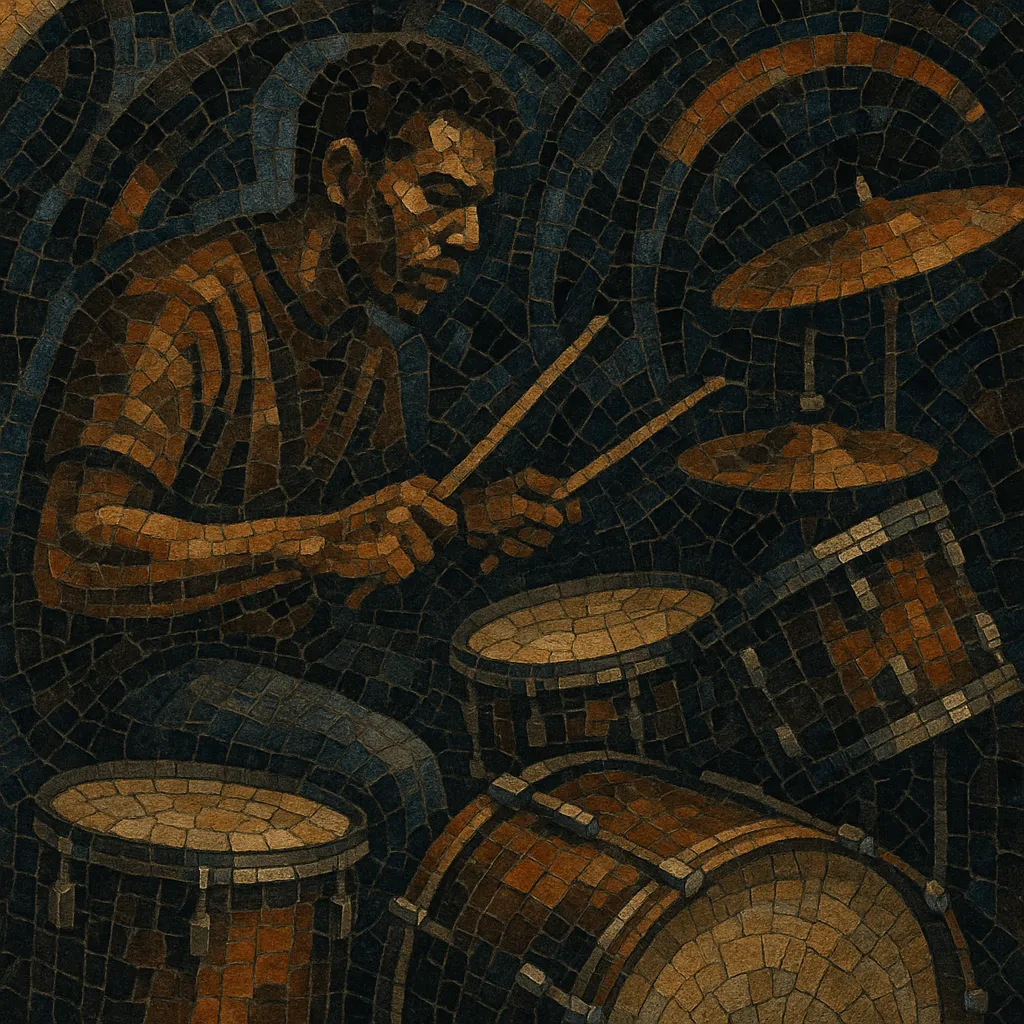Drumfunk is a breakbeat-focused substyle of drum and bass that spotlights intricate, sample-based drum programming over big synth hooks or wobbling basslines.
It typically runs at 160–175 BPM and emphasizes chopped, re-sequenced classic funk breaks (e.g., Amen, Think, Apache), ghost notes, micro-edits, and syncopated hi-hat work. Pads and bass are present but usually understated, creating a sparse, percussive soundstage where the drum groove is the lead instrument.
Aesthetically, drumfunk prizes raw break texture, swing, and human feel, drawing heavily from funk and jazz sensibilities while retaining the tempo and DJ functionality of jungle/drum and bass.
The roots of drumfunk lie in the late 1990s “choppage” ethos of UK jungle and drum and bass, where producers pushed breakbeat editing to new extremes. As the broader scene explored techstep, liquid, and later neurofunk, a circle of artists doubled down on the art of break manipulation, pulling inspiration from funk and jazz records and the classic jungle toolkit of sampled breaks.
By the mid 2000s, the term “drumfunk” had gained currency to describe tracks that put break science at the forefront: maximal detail in the drums, minimal adornment elsewhere. Labels and communities such as Paradox Music, Inperspective Records, Subtle Audio, and online forums around Subvert Central provided a home for this sound. The music prized swing, shuffle, and dynamic, human-feeling breaks over quantized rigidity.
Producers like Paradox (and his Alaska alias), Seba, Fanu, Equinox, Fracture & Neptune, Macc, and dgoHn became standard-bearers. Their releases demonstrated how nuanced chopping, ghost notes, and micro-edits could carry a track with little more than sparse bass and thin atmospheres.
While never the most commercial corner of drum and bass, drumfunk’s techniques permeated later minimal and leftfield DnB currents, some autonomic-era experiments, and microfunk’s micro-detailed percussion. Periodic revivals and ongoing output by dedicated artists keep the approach alive, influencing contemporary break-centric producers across tempos.


